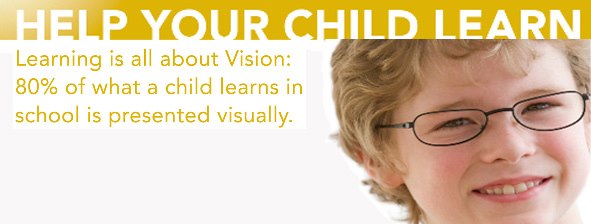That body of knowledge is often not taught to other health professionals. This makes it important to frequently talk about studies that prove the connection between visual skills and reading so that patients get the information they need to get the right help for themselves or their children who, although intelligent, have difficualty learning, reading or doing schoolwork efficiently. Researchers have commented that patients should be referred to an optometrist for assessment of visual information processing deficits because other professionals are likely to not test for them (see page 234 of this article from the journal NeuroReahbilitation).
Many people may be mistakenly diagnosed for learning disabilities or ADHD when the problem is actually a visual one. At the very least, people who are suspected of ADHD or learning disabilities should see a developmental optometrist to be tested for visual information processing deficits to ensure that they are being treated for the right disorder.
One study on the connection between visual attention skills and reading was conducted by Harold A. Sloan, John Shelley-Tremblay, Anthony Ficarra, Michael Silverman, and Steven Larson and published in the Journal of Learning Disabilities in 2003.
In the study 15 moderately disabled readers received 12 hours of vision attention therapy. Significant improvement in reading comprehension and attention scores were seen in the group who received therapy, but not in the control group who received no therapy.
Here is the abstract that was published the the study:
This study quantified the influence of visual attention therapy on the reading comprehension of Grade 6 children with moderate reading disabilities (RD) in the absence of specific reading remediation. Thirty students with below-average reading scores were identified using standardized reading comprehension tests. Fifteen children were placed randomly in the experimental group and 15 in the control group. The Attention Battery of the Cognitive Assessment System was administered to all participants. The experimental group received 12 one-hour sessions of individually monitored, computer-based attention therapy programs; the control group received no therapy during their 12-week period. Each group was retested on attention and reading comprehension measures. In order to stimulate selective and sustained visual attention, the vision therapy stressed various aspects of arousal, activation, and vigilance. At the completion of attention therapy, the mean standard attention and reading comprehension scores of the experimental group had improved significantly. The control group, however, showed no significant improvement in reading comprehension scores after 12 weeks. Although uncertainties still exist, this investigation supports the notion that visual attention is malleable and that attention therapy has a significant effect on reading comprehension in this often neglected population.The study is evidence of the connection between visual attention skills and reading ability as well as the efficacy of vision therapy in treating visual attention deficits and achieving a corresponding improvement in reading ability.

